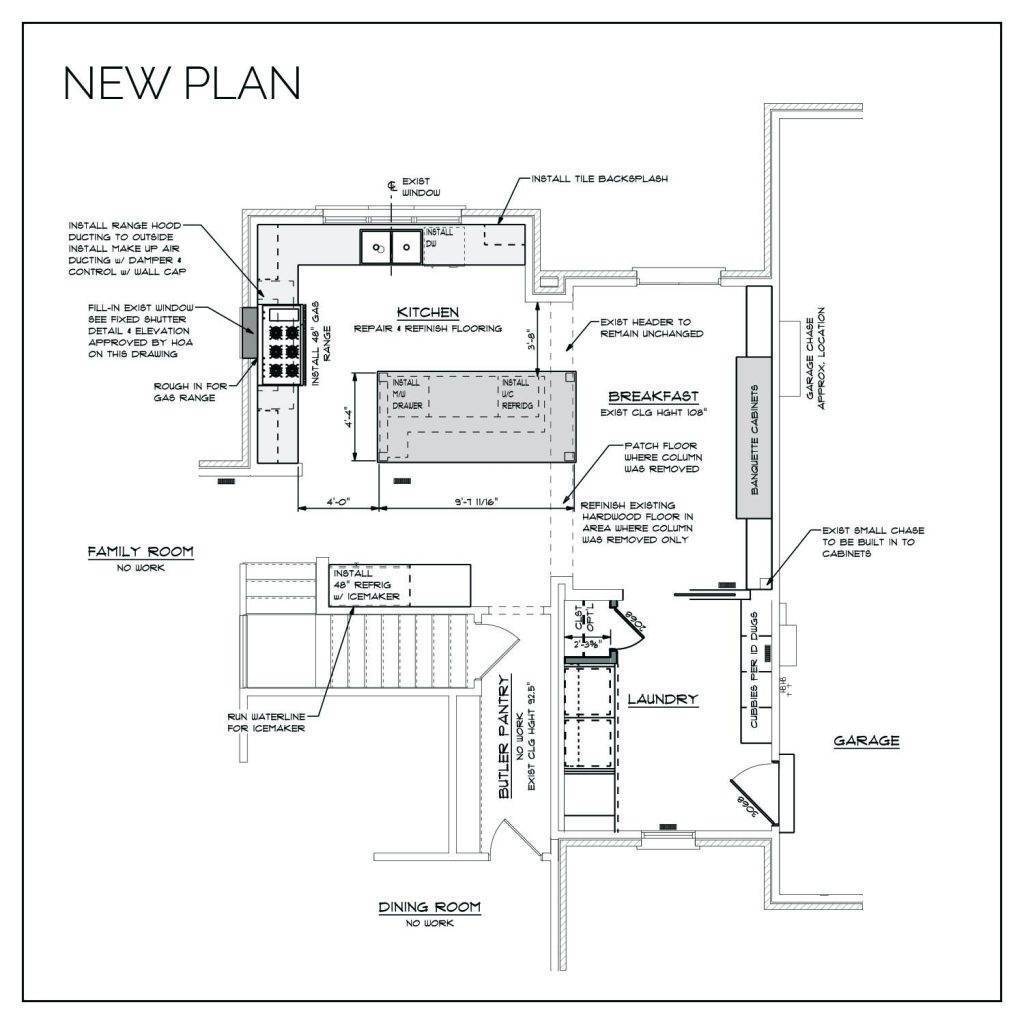Renovating a house can be an exciting yet overwhelming task, as the countless decisions and considerations can easily lead to chaos. When it comes to tackling a house renovation, the order in which you prioritize and execute different tasks can significantly impact the overall success and efficiency of the project. From laying down a solid foundation to ensuring a seamless coordination of various elements, the order in which you renovate a house plays a crucial role in achieving your desired outcome. In this article, we will explore the optimal sequence and rationale behind the key steps involved in renovating a house, enabling you to make informed decisions and navigate the process with confidence.

This image is property of www.thespruce.com.
1. Exterior Renovations
When renovating a house, it is important to start with the exterior as it is the first thing people see when they approach your home. The exterior renovations can greatly improve the curb appeal and overall value of your property.
1.1 Roof
The roof is one of the most important components of a home as it provides protection from the elements. It is crucial to inspect the roof for any signs of damage or wear and tear. If there are any leaks or missing shingles, it is essential to address these issues before moving on to other renovations.
1.2 Windows and Doors
Upgrading your windows and doors can greatly enhance the energy efficiency and security of your home. Consider replacing old, drafty windows with new energy-efficient ones to reduce heating and cooling costs. Additionally, updating your doors with sturdy and well-insulated options can improve both functionality and aesthetics.
1.3 Siding
The siding of your house plays a vital role in protecting the structure from moisture and other elements. If your siding is damaged or worn out, it is advisable to replace it with new, durable materials. There are various options available, such as vinyl, fiber cement, or wood siding, each with its own advantages and aesthetic appeal.
1.4 Landscaping
Enhancing the landscaping around your house can significantly boost its curb appeal. Start by addressing any overgrown shrubs or trees that may be obstructing the view of your home. Consider adding colorful flowers, well-manicured lawns, and attractive hardscaping elements like pathways or garden features. A well-maintained and visually appealing landscape can make a lasting impression on visitors.
2. Structural Repairs
Once the exterior renovations are complete, it is essential to address any structural issues in the house. These repairs are crucial for the safety and stability of the property.
2.1 Foundation
Inspecting the foundation is crucial as any cracks or shifts can lead to significant structural problems. If there are any signs of foundation issues, it is crucial to consult a professional to assess the severity of the problem and determine the necessary repairs.
2.2 Framing
The framing of a house provides the structural support for the walls, floors, and roof. If you notice any sagging or weakened areas in the framing, it is essential to reinforce or replace them to ensure the structural integrity of the house.
2.3 Plumbing and Electrical Systems
Updating the plumbing and electrical systems is not only important for functionality but also for safety. Outdated or faulty systems can pose serious risks, such as electrical fires or water damage. It is crucial to hire licensed professionals to assess and upgrade these systems as needed.
2.4 HVAC Systems
The heating, ventilation, and air conditioning (HVAC) systems are essential for maintaining a comfortable living environment. Consider upgrading your HVAC systems to more energy-efficient options to reduce utility bills and improve indoor air quality. Regular maintenance and servicing are also important to ensure optimal performance.

This image is property of hips.hearstapps.com.
3. Interior Renovations
After addressing the structural repairs, it is time to focus on the interior renovations. These improvements can greatly enhance the functionality and aesthetics of your home.
3.1 Flooring
Installing new flooring can transform the look and feel of any room. There are various options available, such as hardwood, laminate, tile, or carpet, each with its own benefits. Consider the durability, ease of maintenance, and overall aesthetic appeal when choosing the flooring material that suits your needs and style.
3.2 Walls and Ceilings
Updating the walls and ceilings can give your home a fresh and modern look. Consider repainting the walls with neutral colors to create a versatile backdrop for different design styles. Additionally, repairing any cracks or imperfections in the walls and ceilings is crucial to achieve a polished and seamless finish.
3.3 Kitchen
The kitchen is often considered the heart of the home and is a major selling point for many buyers. Consider renovating your kitchen to improve functionality and create a more inviting space. Updating cabinets, countertops, and appliances can make a significant difference in both aesthetics and efficiency.
3.4 Bathrooms
Renovating the bathrooms can greatly improve functionality and comfort. Consider updating fixtures, countertops, and the shower or bathtub to create a spa-like oasis. Additionally, addressing any plumbing issues and ensuring proper ventilation is crucial to prevent moisture-related problems.
3.5 Bedrooms
Focus on creating comfortable and aesthetically pleasing bedrooms. Consider updating flooring, lighting, and window treatments for a more inviting and relaxing space. Adequate storage solutions such as closets or built-in shelving can also greatly enhance functionality.
3.6 Living Areas
Renovating the living areas, such as the living room and dining room, can create inviting spaces for family and guests. Consider updating flooring, repainting walls, and upgrading furniture to create a cohesive and stylish environment.
3.7 Lighting
Proper lighting is essential for creating a comfortable and functional living space. Consider updating old fixtures with more energy-efficient options and installing additional lighting sources to improve ambiance and usability.
3.8 Plumbing Fixtures
In addition to the bathrooms, it is also important to update plumbing fixtures throughout the house. Consider replacing old faucets, showerheads, and toilet fixtures with more modern and water-efficient options. Upgrading plumbing fixtures not only improves aesthetics but also helps conserve water.
3.9 Appliances
Updating outdated or inefficient appliances can greatly enhance the functionality and energy efficiency of your home. Consider replacing old refrigerators, dishwashers, ovens, and laundry machines with newer, energy-efficient models to reduce utility costs and improve overall convenience.

This image is property of uploads-ssl.webflow.com.
4. Energy Efficiency Improvements
Creating an energy-efficient home not only reduces utility bills but also contributes to a more sustainable environment. Consider the following improvements:
4.1 Insulation
Proper insulation is crucial for maintaining a comfortable indoor temperature and reducing energy consumption. Consider adding or upgrading insulation in the walls, attic, and crawl spaces to prevent heat loss in the winter and heat gain in the summer.
4.2 Windows and Doors
Upgrading windows and doors with energy-efficient options can significantly improve insulation and reduce heating and cooling costs. Look for windows and doors with low U-factor and good insulation properties to maximize energy efficiency.
4.3 HVAC Systems
Replacing old HVAC systems with more energy-efficient models can greatly reduce energy consumption and improve indoor air quality. Consider installing programmable thermostats, high-efficiency furnaces, and air conditioning units to optimize energy usage.
4.4 Lighting
Switching to energy-efficient lighting options, such as LED or CFL bulbs, can reduce energy consumption and lower utility bills. Additionally, consider installing motion sensors or dimmers to further optimize energy usage.

This image is property of www.davefox.com.
5. Cosmetic Enhancements
Cosmetic enhancements can greatly improve the overall aesthetics of your home. Consider the following options:
5.1 Paint and Wallpaper
Applying a fresh coat of paint or adding wallpaper can instantly transform the look of any room. Choose colors and patterns that complement your style and create a cohesive atmosphere throughout the house.
5.2 Trim and Molding
Upgrading or adding trim and molding can give your home an elegant and finished look. Consider installing crown molding, baseboards, or decorative trim to add character and elevate the overall design.
5.3 Decorative Fixtures and Hardware
Updating fixtures and hardware, such as doorknobs, faucets, and cabinet handles, can greatly enhance the visual appeal of your home. Choose styles and finishes that complement the overall design and create a cohesive look.
5.4 Finishing Touches
Adding finishing touches, such as decorative accessories, artwork, and plants, can tie the entire design of your home together. Consider incorporating personal touches and elements that reflect your style and personality.

This image is property of blog.hireahelper.com.
6. Final Touches
After completing all major renovations, it is essential to focus on the final touches to ensure a polished and functional living space.
6.1 Cleaning
Thoroughly clean the entire house, including windows, floors, and surfaces, to remove any dust or debris from the renovation process. A clean home not only looks more inviting but also improves indoor air quality.
6.2 Organization and Storage Solutions
Consider implementing organization and storage solutions to keep your home clutter-free and functional. Install shelves, cabinets, or built-in storage spaces to maximize storage potential and keep your belongings organized.
6.3 Furniture and Decor
Finally, select furniture and decor items that complement the overall design and create a comfortable and inviting atmosphere. Choose pieces that not only enhance aesthetics but also provide functionality and comfort.
In conclusion, renovating a house requires careful planning and consideration. Starting with the exterior renovations, addressing structural repairs, focusing on interior renovations, improving energy efficiency, adding cosmetic enhancements, and completing final touches will result in a beautiful and functional home. Remember to prioritize safety, functionality, and your personal style preferences throughout the process.